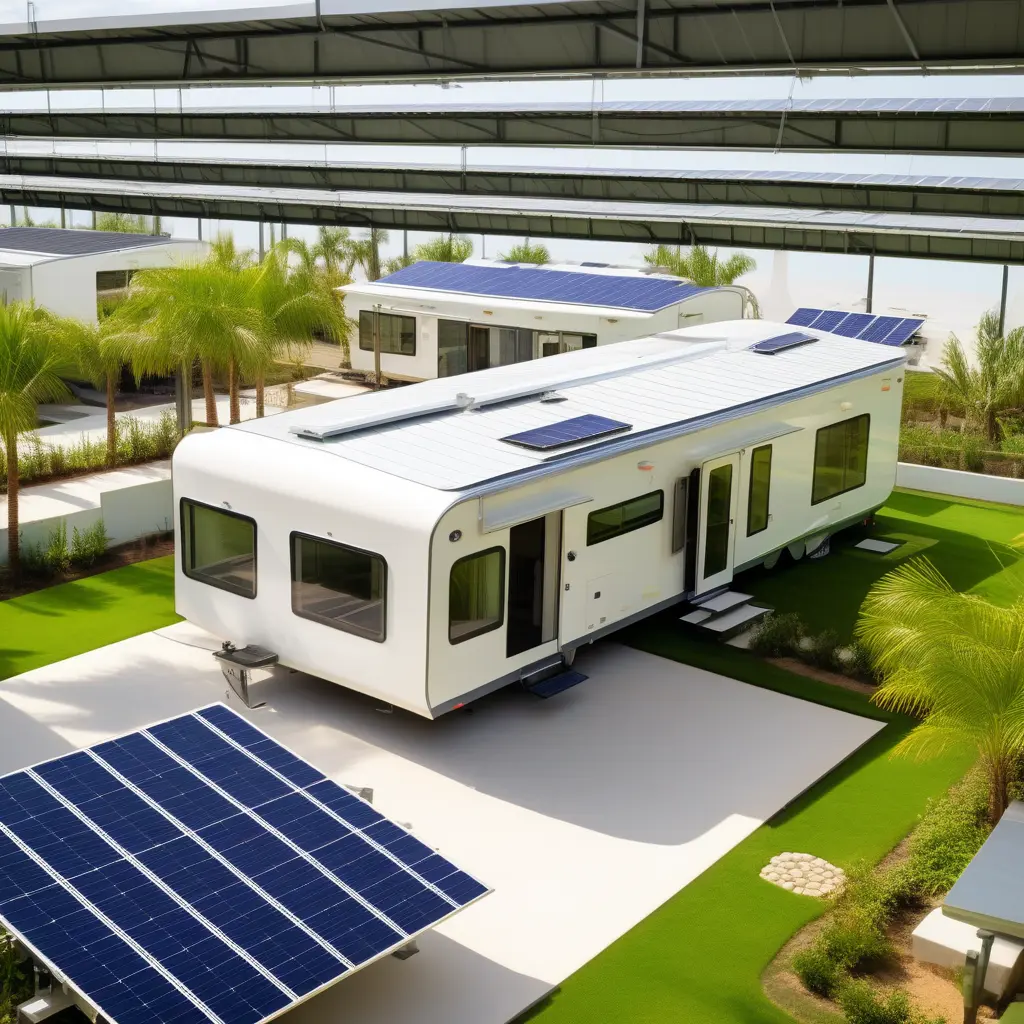How Many Solar Panels To Run A Mobile Home
Adopting sustainable living is more accessible than ever, and for mobile homeowners in California and nearby counties, solar power is proving to be a game-changer. In this guide, we’ll walk you through the intricacies of determining the right number of solar panels needed to power your mobile home efficiently.
Understanding Mobile Homes and Solar Power

Mobile homes, known for their affordability and convenience, are now being paired with solar power to create a harmonious blend of cost-effective and eco-friendly living. However, to maximize the benefits, it’s crucial to calculate the optimal number of solar panels required.
Estimating Solar Power Requirements
The size of a mobile home can vary, but the key to accurate estimation lies in understanding daily electricity consumption. Mobile homes, on average, consume between 4100 and 4500 watts daily, with heating and cooling systems constituting approximately 80% of the total power usage.
Here’s A Breakdown Of A Hypothetical Daily Power Consumption
- Computer usage: 300W
- Mobile device: 30W
- Lighting: 30W
- Refrigerator: 800W
- Heating/Cooling: 3000W
Calculating Solar Panel Requirements
The number of solar panels required for a mobile home will depend on your daily power consumption. However, as a general guideline, an average mobile home may require around 15 x 300-watt solar panels. While a single 300W panel theoretically produces 1500 watts daily (300W x 5 hours of average sunlight), practical considerations necessitate this larger number.
Important Considerations for Solar Power Production
Several factors influence solar power production:
Panel Output Variability: Real-world output may differ from the peak rating, and factors like weather and location can impact performance.
Seasonal Variations: Solar output drops during winter, making it essential to have additional panels to compensate.
Geographical Impact: Regional climate influences panel efficiency, emphasizing the need for surplus capacity.
Given these considerations, a well-sized battery bank or solar generator serves as a reliable backup during adverse conditions.
Solar Power System Components
A complete solar power system for a mobile home includes:
- 15 x 300W solar panels
- 1200ah lead acid battery bank
- 60A MPPT charge controller
- 5000W Solar Inverter
- Backup generator (optional)
Additional components such as surge protectors, circuit breakers, and a system control panel are also crucial.
Solar Panels (15 x 300W)
These are the primary components responsible for converting sunlight into electricity. The 15 solar panels, each with a capacity of 300 watts, work collectively to generate the required power for your mobile home. The total capacity of the solar panels is 4,500 watts (15 panels x 300 watts), providing a sustainable source of clean energy.
Battery Bank (1200ah Lead Acid)
The battery bank serves as an energy storage system. It stores excess energy generated by the solar panels during sunny periods for use during cloudy days or at night when solar production is low. The 1200ah (ampere-hour) lead acid battery bank has a high storage capacity, allowing your mobile home to draw power when needed, providing a continuous and reliable energy supply.
MPPT Charge Controller (60A)
The MPPT (Maximum Power Point Tracking) charge controller is a crucial component that regulates the charging of the battery bank. It optimizes the power output from the solar panels, ensuring that the batteries receive the maximum charge without overcharging, which can damage the batteries. The 60A rating indicates the controller’s capacity to handle up to 60 amps of current.
Inverter (5000W)
The inverter plays a key role in the solar power system by converting the direct current (DC) electricity generated by the solar panels and stored in the batteries into alternating current (AC), which is the type of electricity used in most household appliances. The 5000W inverter has a capacity of 5000 watts, allowing it to handle the electrical needs of various devices and appliances in your mobile home.
Backup Generator (Optional)
While not a core component of the solar power system, a backup generator provides an additional power source for situations where solar energy may be insufficient, such as extended periods of cloudy weather. It serves as a contingency plan to ensure a continuous power supply during unexpected circumstances. The decision to include a backup generator depends on individual preferences and specific energy needs.
It’s important to note that a well-designed and properly integrated system includes additional components such as surge protectors, circuit breakers, a system control panel, and all necessary cables, connectors, and wiring to ensure the safety and efficiency of the solar power setup for your mobile home.
Conclusion
Solar-powered mobile homes present a sustainable and economical living solution. Understanding the optimal number of solar panels required empowers homeowners to make informed decisions. If you’re considering the switch to solar energy in Santa Barbara, Santa Barbara, Goleta, Lompoc, Santa Ynez Valley, Los Alamos, Santa Maria, or surrounding areas, Solar Earth Inc. offers professional installation services tailored to your specific needs. Leap to sustainable living and harness the power of the sun for your mobile home!
FAQs
What Types Of Batteries Are Suitable For A Solar Power System?
Several types of batteries are suitable for solar power systems, including lead acid batteries (flooded, AGM, gel), lithium-ion batteries (LiFePO4, NMC), and saltwater batteries (sodium-ion). The choice depends on factors like cost, maintenance, and energy storage needs. Lead acid batteries are traditional and affordable, while lithium-ion batteries offer higher efficiency and longer lifespan. Saltwater batteries provide a safer and eco-friendly alternative.
How Does The Weather Affect Solar Power Production?
Weather affects solar power production by influencing sunlight intensity, temperature, and seasonal variations. Storms, pollution, and nighttime also impact solar panel efficiency.
What Other Components Are Required For A Solar Power System?
To solar panels, a solar power system requires components such as inverters, charge controllers, batteries (optional), wiring, and mounting structures for optimal performance.
